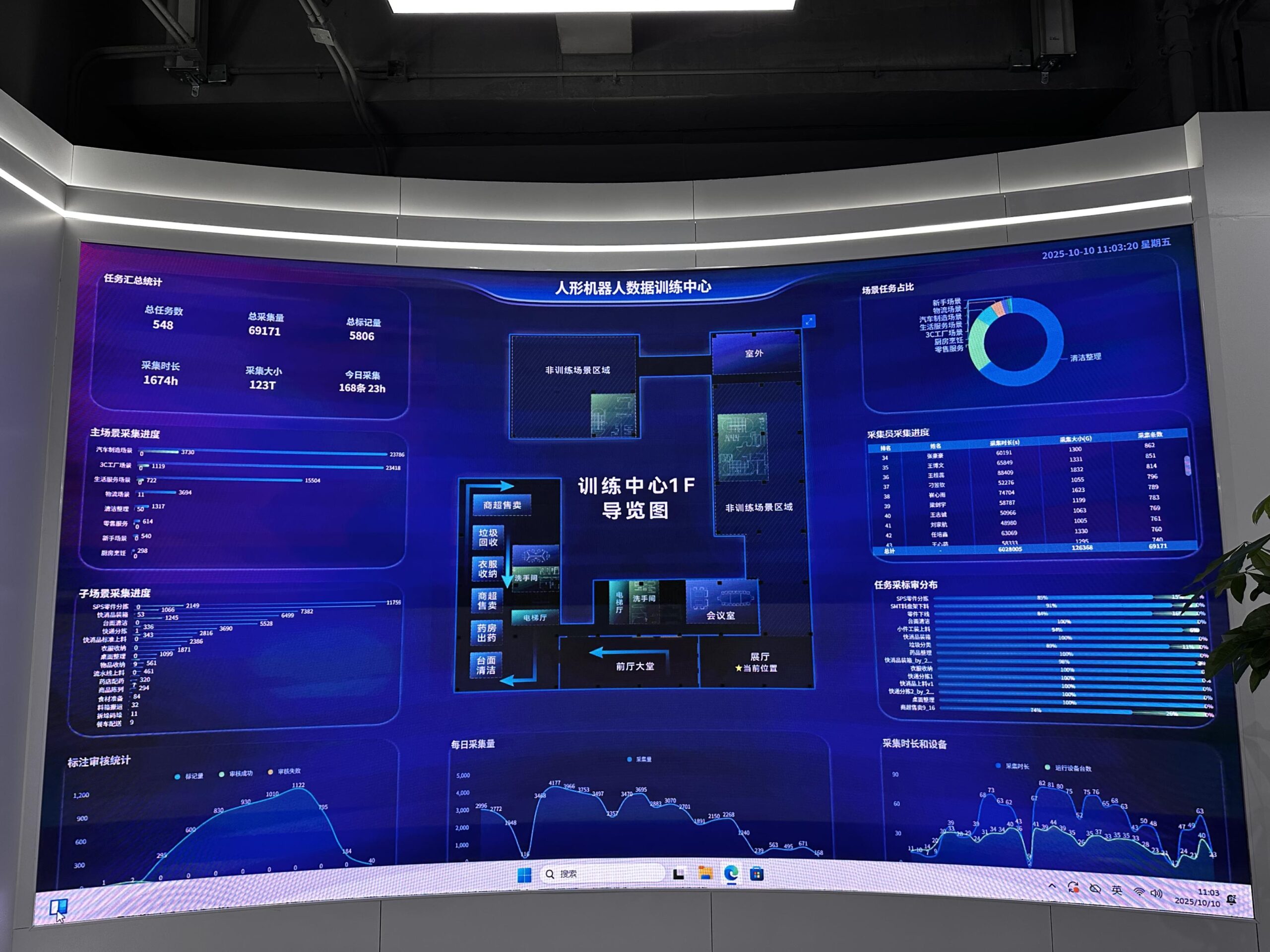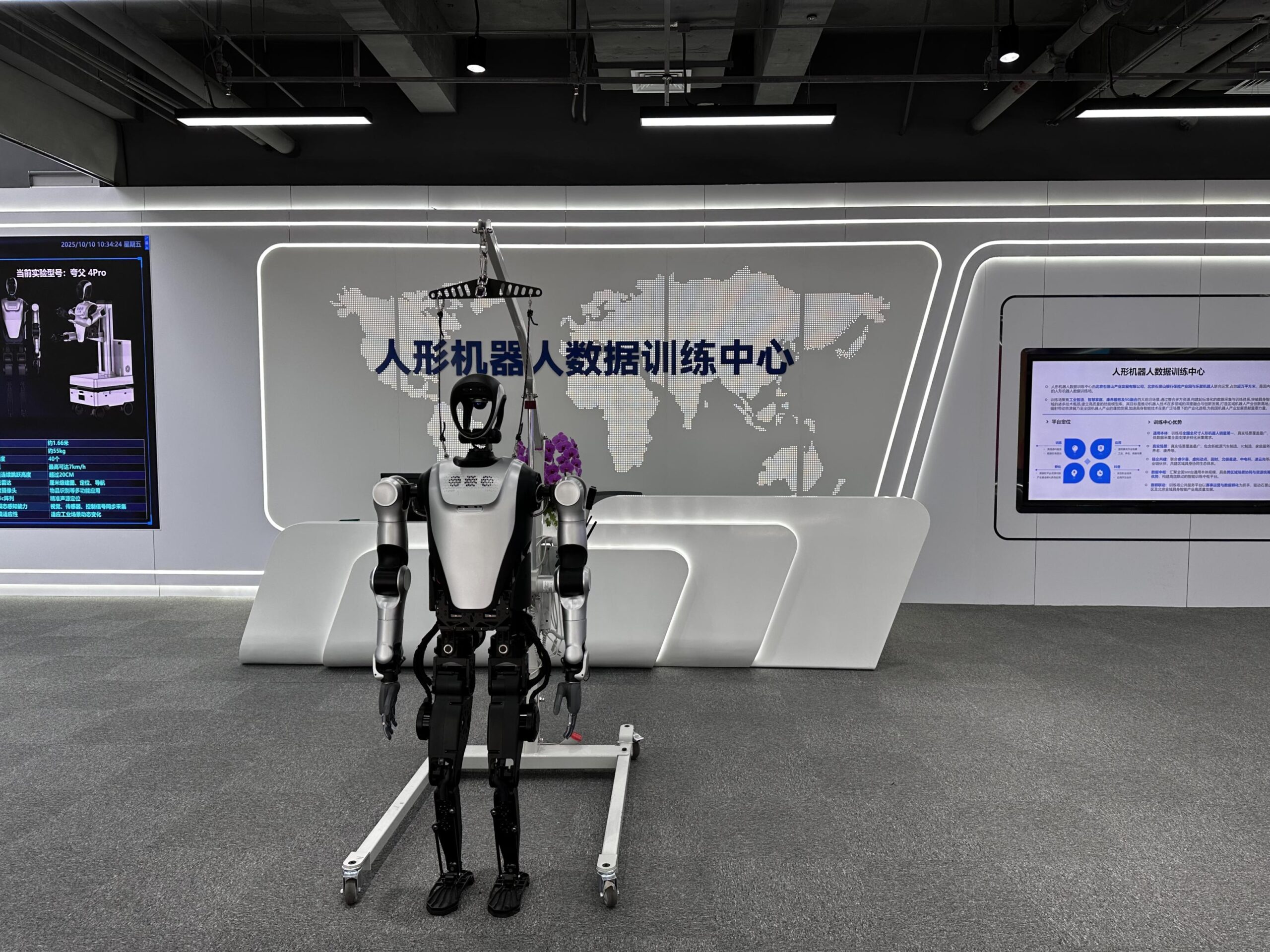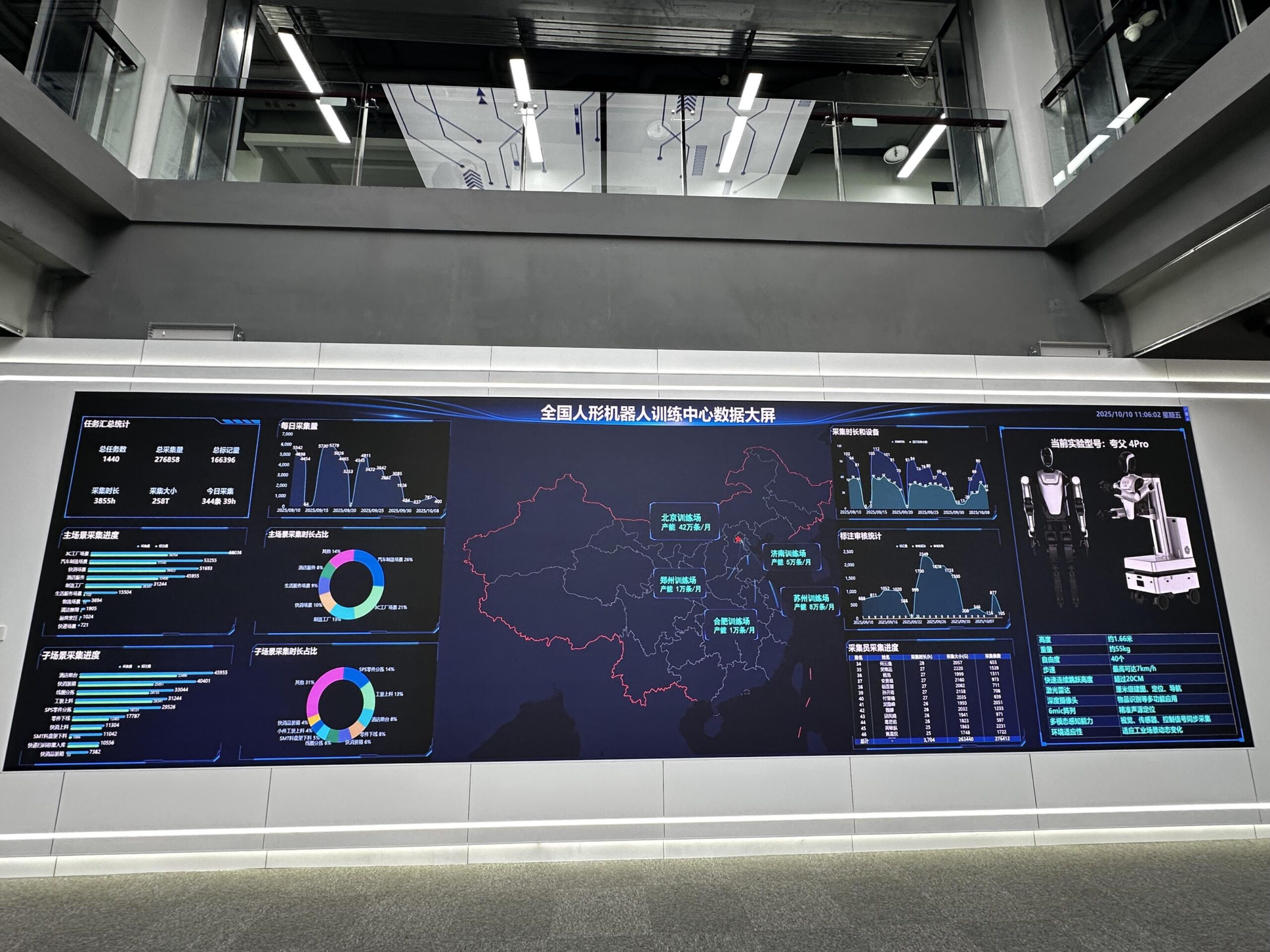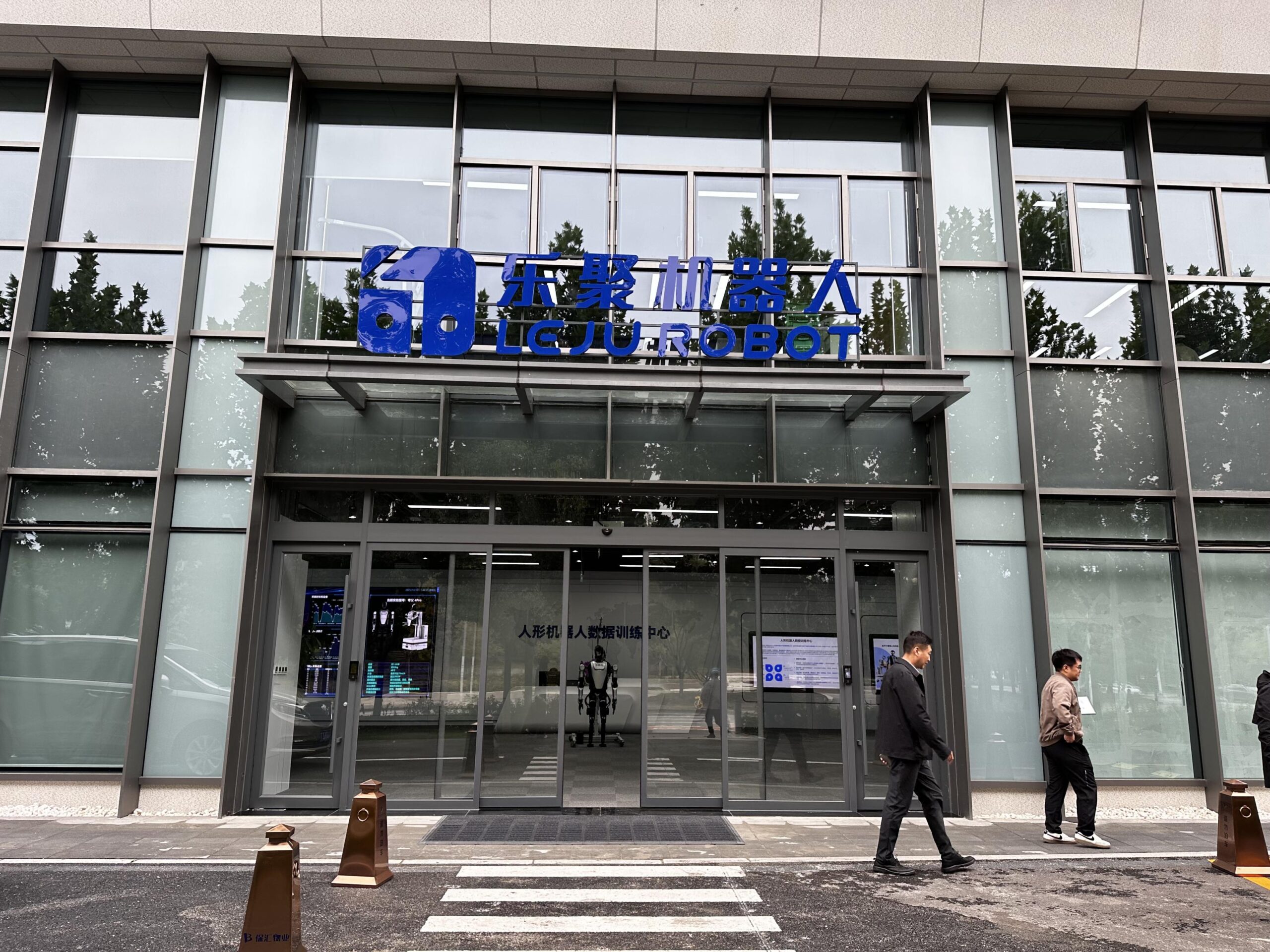Organizing cables, washing and cutting potatoes and carrots… Robots are increasingly becoming part of human life, and this is quickly becoming reality in western Beijing.
Recently, the humanoid robot data training center located in the Beijing Bank Insurance Industrial Park in Shijingshan District began operations. It primarily conducts training for scenarios such as home life and industrial manufacturing, producing over 6 million high-quality real-world application data points annually, providing reliable data support for humanoid robots to enter households, industrial production, and business services.
Inside the training center, there’s a bustling scene of activity. On the first and second floor training platforms, various common application scenarios are set up – some are kitchen sinks, some are supermarket shelves, along with automotive parts assembly lines and logistics sorting areas. Trainers wear VR headsets and operate controllers to remotely control the robots, while data technicians record operational data in real-time, completing training tasks for one real-world scenario after another.

At the cleaning and organizing workstation for home life scenarios, a humanoid robot, operated by a trainer, is busy placing charging cables from the table into a storage box one by one, then putting on the lid and returning it to the storage cabinet. When organizing cables, the robot encounters interference options, such as books covering the cables. The robot needs to move the books aside before completing the organization, more realistically recreating home life scenarios.

“While organizing cables might seem simple for humans, from a robot training perspective, completing this series of actions requires 12 steps and takes about 15 minutes to complete. During this process, the same step cannot fail more than 3 times, otherwise it needs to start over,” explained a technical staff member. “Only after repeating this set of actions 10 times and achieving effective data collection is a task considered complete. This data is then cleaned, labeled, exported, and provided to companies for large model training.”

The robot being trained on site is named “Kuafu,” a humanoid robot developed by Leju Robot Company primarily for industrial application scenarios. It stands 1.66 meters tall, weighs 55 kilograms, and moves flexibly with stable posture. It has cameras installed in its head and both hands, with the collected data mainly coming from the motion trajectories recorded by these cameras.
“Just like teaching a child to walk requires extensive practice, robots also need repeated training in various scenarios to become smarter. All the scenarios we’ve built come from real enterprise needs, aiming to solve the data shortage problem currently facing the robot industry,” the technical staff member said. “Our training


